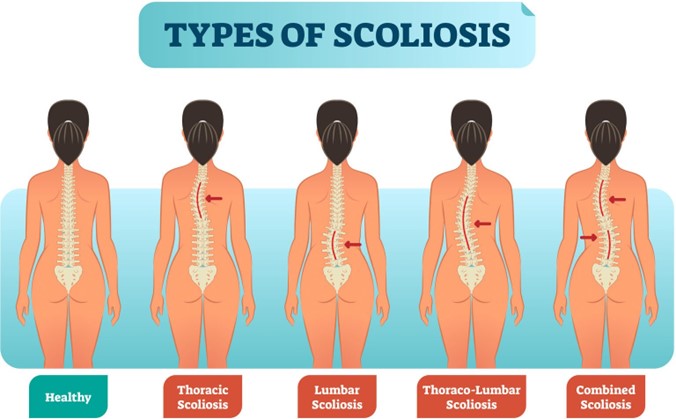The practical nurse (PN) plans to screen only high-risk children for scoliosis. Which group of children should the PN screen?
High school boys.
High school girls.
Middle school boys.
Middle school girls.
The Correct Answer is D
This is the group of children that the PN should screen for scoliosis because they are at the highest risk of developing this condition. Scoliosis is a lateral curvature of the spine that usually occurs during the growth spurt before puberty. Girls are more likely than boys to have scoliosis, and the condition tends to worsen during adolescence.

A. High school boys are not at high risk of scoliosis and do not need to be screened unless they have signs or symptoms of the condition.
B. High school girls are at lower risk of scoliosis than middle school girls because they have completed most of their growth spurt and their condition is less likely to progress.
C. Middle school boys are at lower risk of scoliosis than middle school girls because they have a slower growth rate and a later onset of puberty.
Nursing Test Bank
Naxlex Comprehensive Predictor Exams
Related Questions
Correct Answer is ["40"]
Explanation
The client’s 0730 finger stick glucose is 271 mg/dL. According to the sliding scale parameters, the client should receive:
Step 1: Determine the amount of insulin aspart based on the sliding scale. Since the glucose level is 271 mg/dL, which falls in the range of 270 to 300 mg/dL, the client should receive 15 units of insulin aspart.
Step 2: Add the amount of NPH insulin to the amount of insulin aspart. The client has a prescription for NPH insulin 25 units before breakfast. So, the total amount of insulin this client should receive is 25 units (NPH insulin) + 15 units (insulin aspart) = 40 units.
So, the total amount of insulin this client should receive is40 units.
Correct Answer is B
Explanation
The correct answer is choiceB. Culture for sensitive organisms.
Choice A rationale:
C-reactive protein (CRP) levels are indicative of inflammation in the body and can help identify the presence of an infection. However, CRP levels do not provide specific information about the type of organism causing the infection, which is crucial for targeted treatment.
Choice B rationale:
A culture for sensitive organisms is essential in this scenario because it identifies the specific bacteria or other pathogens present in the wound. This information is critical for selecting the appropriate antibiotic therapy to treat the infection effectively.
Choice C rationale:
Serum albumin levels are important for assessing nutritional status and overall health, which can impact wound healing. Low albumin levels can indicate poor nutritional status and delayed wound healing, but they do not provide immediate information about the infection itself.
Choice D rationale:
Serum blood glucose (BG) levels are crucial for managing diabetes and can affect wound healing. High blood glucose levels can impair the immune response and slow down the healing process. However, like CRP, BG levels do not provide specific information about the type of infection present in the wound.
Whether you are a student looking to ace your exams or a practicing nurse seeking to enhance your expertise , our nursing education contents will empower you with the confidence and competence to make a difference in the lives of patients and become a respected leader in the healthcare field.
Visit Naxlex, invest in your future and unlock endless possibilities with our unparalleled nursing education contents today
Report Wrong Answer on the Current Question
Do you disagree with the answer? If yes, what is your expected answer? Explain.
Kindly be descriptive with the issue you are facing.
